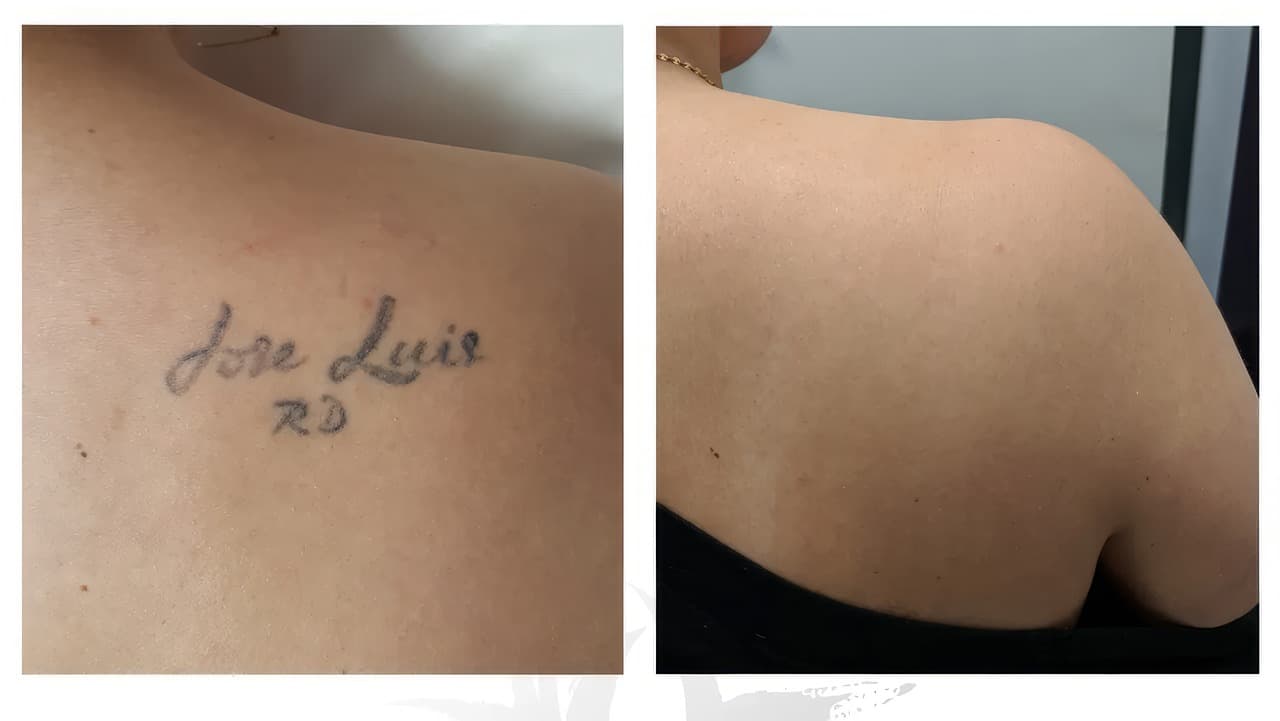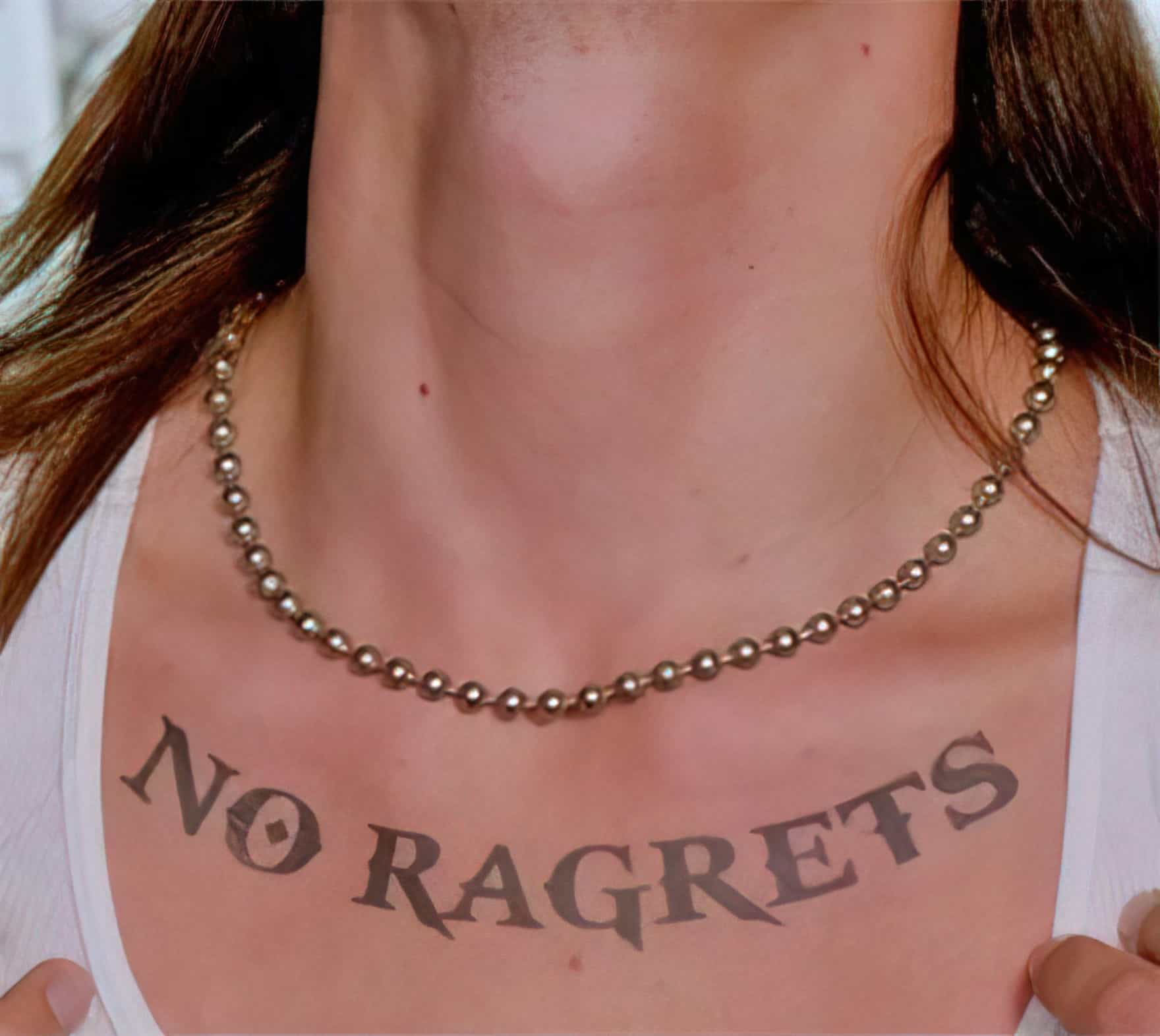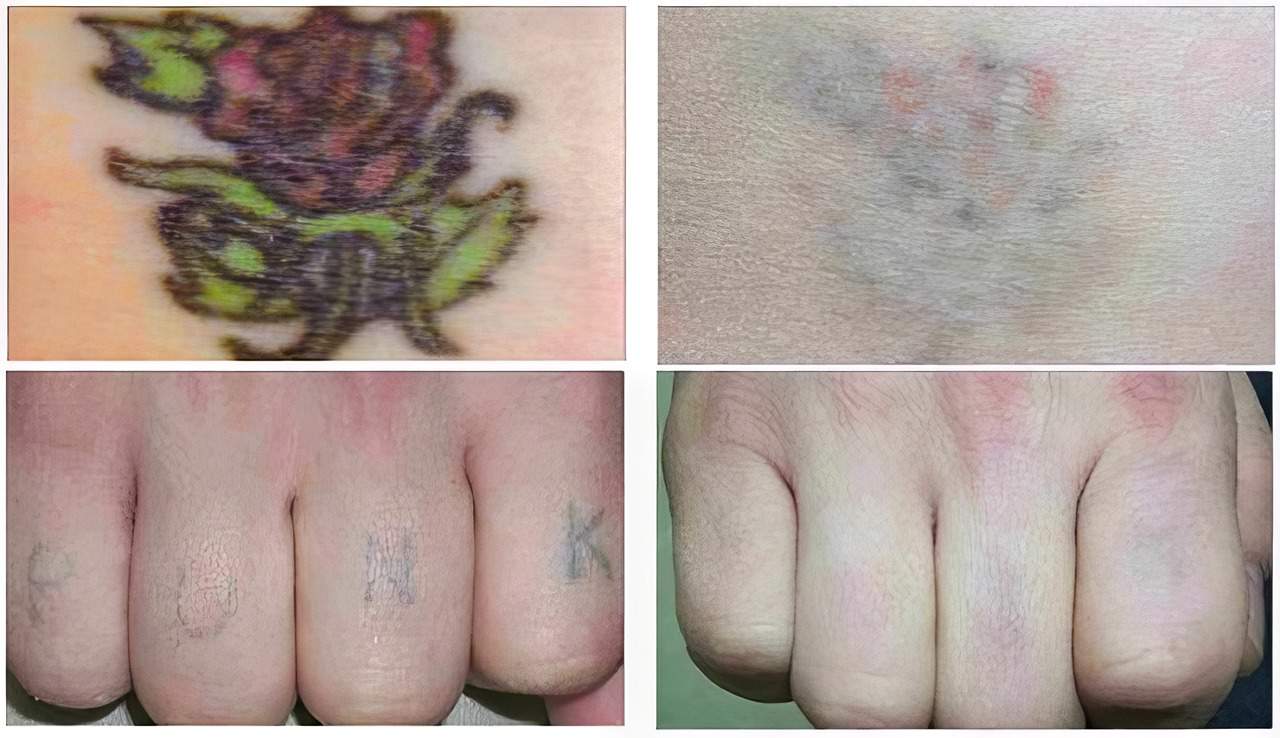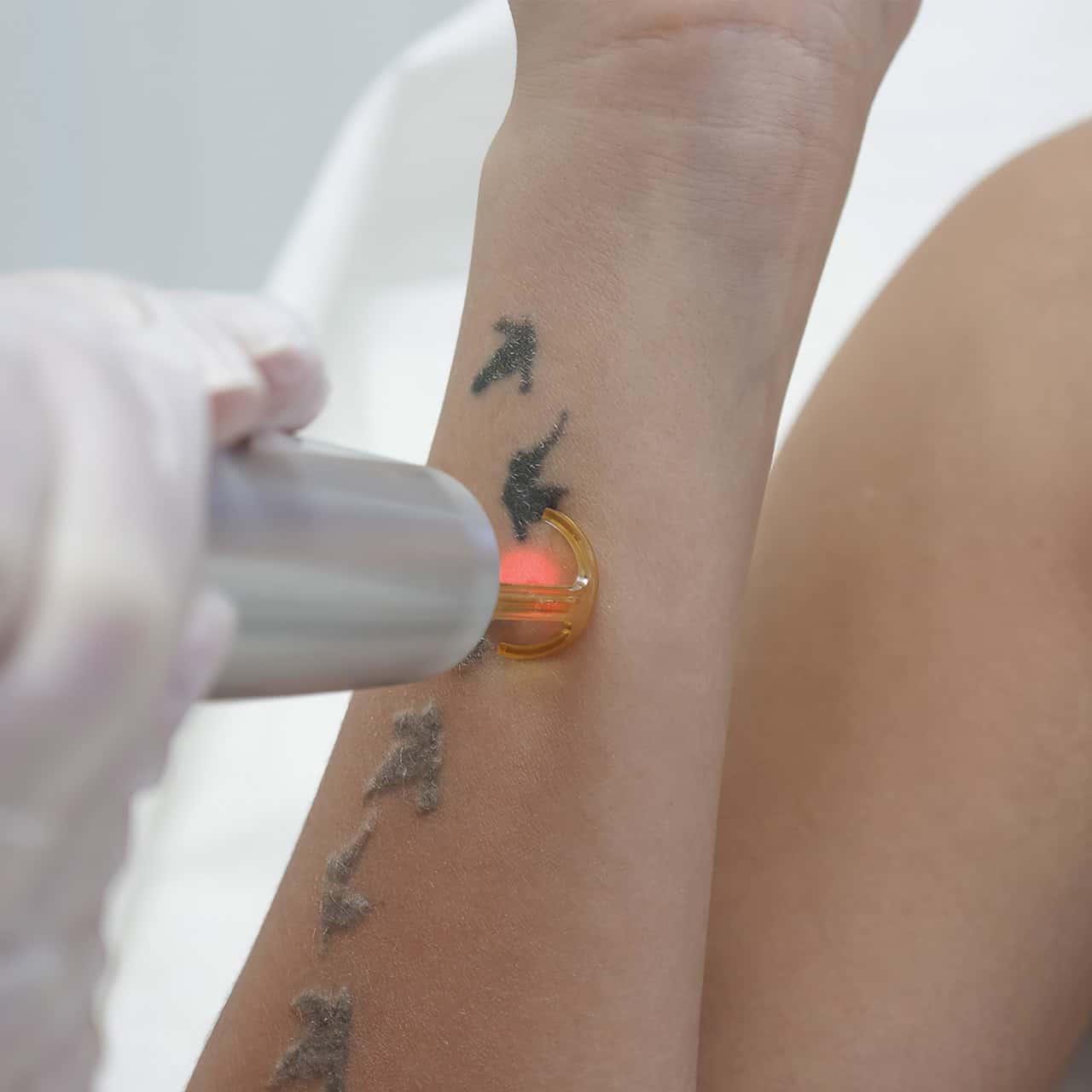Getting inked can be an exciting and personal experience, but what happens when that new tattoo turns out to be a major disappointment? Whether it’s due to misspellings, ugly designs, or faded colors, dealing with a bad tattoo can be emotionally distressing.
Fortunately, there are ways to address the situation and reclaim your skin.
Key Takeaways
Tattoo regret is common and can stem from various factors, such as poor design choices, impulsivity, or changes in personal taste or lifestyle.
Signs of a bad tattoo include misspellings, poor designs, scarring and fading, and portrait disasters. It’s important to research artists thoroughly before committing to the tattoo process to avoid them.
Options for dealing with a bad tattoo include giving it time to settle in and considering touch-ups or changes from an experienced artist. Cover-up options can provide an effective solution if done correctly by a skilled artist. Laser tattoo removal is another option but carries potential risks that should be considered carefully beforehand.
Prevention is key in avoiding bad tattoos by researching qualified artists and double-checking spelling and design beforehand. Remember that even small regrets should not go ignored because dealing with them proactively will bring peace of mind in the end.
Table of Contents
Understanding Tattoo Regret
Tattoo regret is a common phenomenon that affects many individuals, including men. It can stem from various factors, such as poor design choices, impulsivity, or even changes in personal taste and lifestyle over time.
For example, a person who once embraced their wild side may have chosen an aggressive or controversial design that now seems at odds with their current personality or career path.

Others may experience tattoo regret due to poorly executed artwork like misspellings, bad designs, and fuzzy lines – turning what should have been proud displays of self-expression into cringeworthy reminders of uninformed decisions.
Taking the time to understand why you’re experiencing tattoo regret is key; by pinpointing the root cause of your dissatisfaction, varying solutions can be pursued–whether it be removal (laser or surgical), cover-up work by skilled artists giving new life through fresh designs cleverly disguising previous mistakes; ultimately transforming negative emotions associated with unwanted ink into newfound appreciation.
Identifying A Bad Tattoo
To avoid the regret of a poorly done tattoo, it’s essential to identify what makes a bad tattoo. Misspellings, poor designs, scarring and fading, and portrait disasters are all signs of a bad tattoo.
Misspellings
One of the most cringe-worthy and easily avoidable causes of a bad tattoo is misspellings. Picture this: you’ve just invested time, money, and a bit of pain into getting new ink, only to realize that there’s a glaring spelling error staring back at you.
For example, imagine proudly sporting a tattoo that reads “No Ragrets” or “Strenght.” These spelling blunders can turn your body art into an embarrassing mistake rather than the meaningful expression you intended.

That’s why taking the extra time to check and recheck any text-based tattoos with your chosen tattoo artist is essential in avoiding these ugly or hilarious slip-ups.
Poor Design
A bad tattoo can often result from poor design choices, as not all tattoo artists are equal in skill and creativity. Men may opt for intricate tribal patterns or impressive sleeves without realizing that an inexperienced artist could significantly affect the outcome of their desired body art.
To avoid this issue, it is crucial to conduct thorough research on your chosen artist’s previous work and consult with them regarding your ideas before committing to the tattoo process.
Ask for referrals from friends and view artists’ portfolios online or in person at their studios to ensure you’re working with a skilled professional who understands your vision.
Keep in mind that high-quality tattoos require superior craftsmanship; don’t be afraid to invest more money into securing an experienced artist rather than trying to save costs by compromising on quality.
Remember, good vs.
Scarring And Fading
One major sign of a bad tattoo is scarring and fading. When the ink has not been applied properly, it can cause raised scars or even keloids to form on the skin.
Luckily, there are ways to deal with these issues. Tattoo removal and cover-up options can help to improve the appearance of a bad tattoo by either completely removing it or disguising it with a new design.
However, it’s important to keep in mind that removal methods like laser treatment and surgical excision can also carry their own risks, such as infection or scarring.
Portrait Disasters
Portrait tattoos are a popular choice among many men, but they can be risky if not done well. Portrait disasters happen when the image on your skin looks nothing like the intended person or has serious design issues that cannot be fixed with touch-ups.
Poorly designed portraits often result in regret and are one of the most common first tattoos people get. Even worse, inexperienced artists or heavy-handed ones can leave you with scarring that is challenging to rectify, cover up or remove using laser treatment.
That’s why it’s critical to research your artist thoroughly before choosing them for your portrait tattoo and ensure they have prior experience in successfully creating quality portraits on skin.
Dealing With A Bad Tattoo
Give it time and consider consulting with a professional who can advise on cover-up options or the tattoo removal process.

Give It Time
If you’re not sure about your tattoo, it’s important to give it some time before deciding on removal or cover-up options. Sometimes people can experience a change of heart after getting a tattoo and may regret their decision.
Giving yourself some time to get used to the tattoo and see how it settles into your skin is essential. This could take a few weeks or months, depending on the size and location of the tattoo.
If there are specific elements that you don’t like about your new ink, consider talking with an experienced artist who might have ideas for touch-ups or changes that could make all the difference.
Consult With A Professional
If you’re dealing with a bad tattoo, it’s important to consult with a professional. A licensed and experienced tattoo artist or removal specialist can provide valuable advice on your options for correcting or removing the tattoo.
For example, if you want to cover up the existing tattoo with another design, a skilled artist can help you choose a suitable design that complements your skin tone and covers up the original one effectively.
On the other hand, if you decide to remove the tattoo altogether, they can explain different types of removal procedures like laser treatment or surgical excision.
Tattoo Cover-Up Options
One of the options to deal with a bad tattoo is getting a cover-up, but you need to find a skilled tattoo artist who can design and execute the new tattoo seamlessly.
Find A Skilled Tattoo Artist
The importance of finding a skilled tattoo artist cannot be overstated when dealing with a bad tattoo. Not only can they help you cover it up or potentially fix the mistake, but they can also suggest different options that you may not have considered.
Look for an artist who specializes in cover-up tattoos and has experience working with similar situations to yours. Research their portfolio and read reviews from previous clients to determine if their work aligns with your style and expectations.
Design Considerations
When it comes to covering up a bad tattoo, choosing the right design is essential for success. A skilled tattoo artist can guide you in selecting a design that will integrate and camouflage the old tattoo effectively.
Consider using darker colors and bold designs to cover up an existing one successfully. For example, if your old tattoo features thin lines or light shading, consider opting for a bolder design with thicker lines and more extensive shading to create effective coverage.
You should also take into account the size and location of the new design to ensure it complements your body shape while disguising the previous ink job.
Tattoo Removal Process
The tattoo removal process can involve laser treatments, surgical excision, or chemical peels, and the number of sessions required will depend on the size, color, and location of the tattoo.

Types Of Tattoo Removal
There are several types of tattoo removal available to help get rid of a bad tattoo. Here are the different options:
- Laser Removal: This involves using a high-intensity laser beam that breaks up the ink particles in the skin, allowing them to be absorbed and eliminated by the body’s immune system.
- Dermabrasion: This method involves removing the top layer of skin with a wire brush or diamond fraise, which will then remove the tattoo ink along with it.
- Surgical Removal: If all else fails, surgical excision is an option where your dermatologist will cut out your tattoo and sew up the surrounding tissue.
It’s important to note that while these methods are effective in removing tattoos, they also come with risks such as scarring, infection, hypopigmentation, or hyperpigmentation. It’s crucial to consult with a licensed dermatologist or specialist before deciding on a particular method and to make sure you follow proper aftercare instructions to avoid any complications during healing.
Number Of Sessions Needed
The number of sessions needed for tattoo removal varies widely based on different factors, such as the size, color, and placement of the tattoo. Typically, it takes between 3 to 12 sessions to remove a tattoo completely, with each session costing anywhere from $100 to $600.
Moreover, it is important to remember that tattoos can be stubborn creatures; black and dark-colored tattoos are typically easier to remove compared to colored ones. In addition, people with light skin see better results than those with darker complexions as they have less melanin in their skin which makes them more sensitive during the laser process.
Aftercare Tips
Proper aftercare is crucial when dealing with tattoo removal. Follow these tips to ensure a safe and successful process:
- Keep the area clean: Wash the treated area gently with soap and water twice daily, pat it dry, and apply an antibiotic ointment.
- Avoid sunlight: Cover the treated area with clothing or sunscreen for at least 6 weeks after each session.
- Do not pick scabs: Allow any scabs or blisters to heal on their own, as picking them can lead to infection and scarring.
- Ice the area: Apply ice packs to the treated area as needed to reduce swelling and discomfort.
- Stay hydrated: Drink plenty of water before and after each session to help your body flush out ink particles.
- Avoid vigorous exercise: Refrain from activities that cause sweating or friction in the treatment area until it has completely healed.
- Use numbing cream if necessary: If you experience pain during the removal process, consider applying a topical numbing cream beforehand.
Remember that proper aftercare is essential for avoiding infection, minimizing scarring, and achieving optimal results from your tattoo removal sessions.
Prevention Tips For Avoiding Bad Tattoos
Research tattoo artists thoroughly before committing to a design, and make sure they are licensed and experienced.
Research Tattoo Artists
Do your research before choosing a tattoo artist to avoid a bad tattoo experience. Look for licensed and reputable tattoo studios with experienced artists.
Check their portfolio online to see if their style matches what you have in mind, and read reviews from previous clients.
Remember that tattoos are permanent. so take the time to find an artist who understands your vision and can bring it to life on your skin.
Double-Check Spelling And Design
Proper spelling and design are crucial when getting a tattoo to avoid regret. Before getting inked, take the time to double-check spellings and design elements with your tattoo artist to ensure that everything is correct.
It’s not uncommon for people to misspell words or choose a poor design without realizing it until it’s too late.
For example, imagine getting a quote tattoo but later discovering that one of the words is spelled incorrectly. This mistake could lead to frustration and disappointment every time you look at your tattoo.
Taking extra precautions before getting inked can save you from unwanted stress down the line.
Follow Aftercare Instructions
Aftercare is crucial in ensuring the healing process goes smoothly and that your tattoo doesn’t end up looking worse than it should. Proper aftercare involves keeping the tattoo clean and moisturized while avoiding activities that can damage or irritate the area around your new ink.
Failing to follow these instructions can result in infection, scarring, fading of colors or lines, or even loss of entire segments of ink. It’s important not only for good aesthetic results but also for your health.
Be sure to communicate any concerns you have with your artist during the consultation period so they can provide more detailed information on what aftercare entails based on their expertise and experience handling tattoos like yours.
Frequently Asked Questions (About Dealing With a Bad Tattoo)
Can a bad tattoo be fixed or covered up?
Yes, bad tattoos can often be fixed or covered up with the help of a skilled and experienced tattoo artist. This may involve laser removal, reworking the design to improve its appearance, or incorporating new elements into an existing piece to mask flaws.
How long does it take to remove a bad tattoo with laser treatment?
The length of time needed for laser tattoo removal varies depending on factors such as the size and color intensity of the ink used. Most sessions last approximately 15-30 minutes, but complete removal often requires multiple treatments spaced several weeks apart.
What if I’m unhappy with my new tattoo after getting it done?
If you’re not satisfied with your newly acquired ink, speak directly with the artist who performed the work – they may be willing to make alterations free of charge within a short timeframe (typically 24-48 hours). However, major changes are usually not possible without scheduling another appointment at added cost.
Can home remedies be effective in fading or removing unwanted tattoos?
It is generally advised against using home remedies for this purpose as these can lead to serious skin irritation and scarring over time. Instead, it’s best to seek professional advice from dermatologists or reputable cosmetic clinics that specialize in removing/hiding permanent marks like tattoos safely & effectively, relying upon modern technology & procedures specifically designed for this purpose, such as lasers or Intense pulsed light systems(IPCL).
Conclusion
Dealing with a bad tattoo can be stressful, but there are various options available to correct or remove the tattoo. Before making any decisions, it’s important to identify what makes the tattoo “bad” and consult with a professional for advice.
Tattoo cover-up options can provide an effective solution if done correctly, but it’s essential to find a skilled artist who can integrate and camouflage the old tattoo seamlessly into the new design.
Laser tattoo removal is another popular option, but it may require multiple sessions, and potential side effects such as scarring or hypo- or hyperpigmentation should be considered carefully before deciding.
Ultimately, prevention is key in avoiding bad tattoos by researching qualified artists and double-checking spelling and design beforehand.

